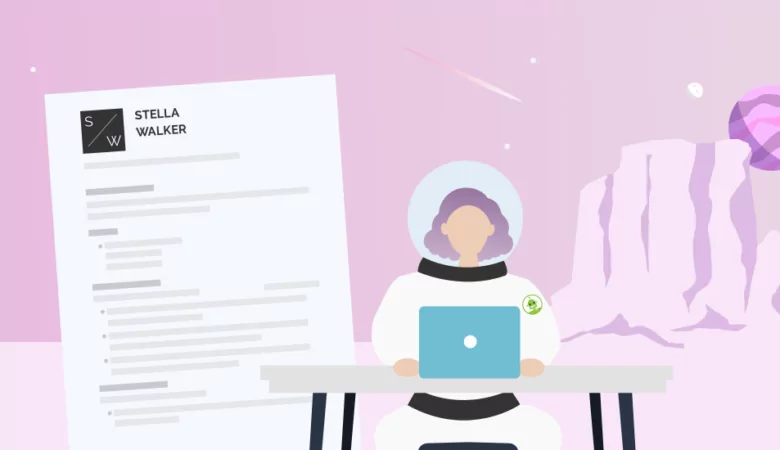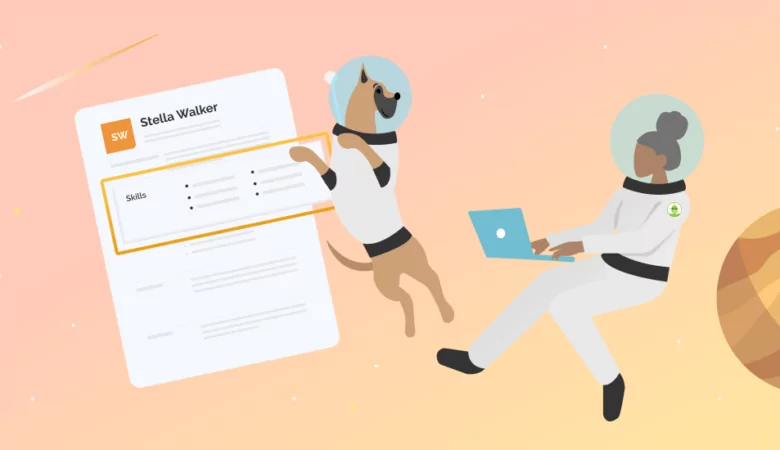A resume header is the first thing recruiters see. Here’s how to create an eye-catching resume header and secure your dream job.

Create an Eye-Catching Resume Header This Year
Resume Header
An important element of your resume is your resume header. Not only does it include essential contact information, but also it helps sets the tone for your resume’s design and layout. For more guidance on how to approach your resume header and what to include, read on!

What to Include in Your Resume Header
The information in your resume header should be straightforward, brief and simple.
At the top of your header should be your full name: first and last name. Sometimes, job seekers will use a larger font for the name and a smaller font for the rest of their resume to ensure they stand out to recruiters or hiring managers.
Next, add your contact information. Typically, you’ll want to include your phone number and a professional email address. If you don’t have a professional email address, then consider making one as follows: FirstnameLastname@gmail.com. Additionally, ensure your phone number connects to a cell phone and that you have a professional voicemail set up.
You should also include your location in your resume header. Most people don’t put their full street address but at least their city and state. If you’re not sure whether or not to put your full street address, look at some of our resume examples for guidance.
If you have a professional portfolio link, then it’s also a good idea to add it to your resume header. For example, you could include a link to a personal website or portfolio website, a LinkedIn profile, or a professional Twitter handle. However, only include links to professional social media sites you often use, and provide information about your career and professional background.
Finally, you may want to consider adding a resume headline. A resume headline is a short, one-phrase statement that showcases your best skills and achievements. This is different from a resume objective or summary, which are typically a few sentences long and at the top of your resume. Instead, a resume headline is short, brief, and eye-catching to allow you to stand out from other candidates. If you have a specific strength or accomplishment you want to highlight, then consider adding that to your resume headline.
Eye-Catching Resume Header Examples
Here are some things to keep in mind as you’re designing your resume header:
- Always put your name at the top of the page.
- Look at resume header examples.
- Proofread your resume header, and make sure it includes all vital information.
Ultimately, a good resume header will showcase the most important details a hiring manager needs without filler information. If you’re not sure where to start, then check out our resume examples and resume templates to help you get an idea of how to format your resume. However, don’t go overboard on fancy graphics and design elements that could distract hiring managers or applicant tracking systems (ATS) used to read resumes.
Using a resume builder is one of the best ways to ensure your resume header is professional and formatted correctly. A professional resume template helps ensure you have a polished look for the rest of your resume. Use our resume builder to get help with your header and the rest of your resume.
FAQ: Resume Headers
Yes, you should always have a resume header. Although all the elements of your resume are important, the resume header is the first thing a hiring manager will see, which means it sets the tone for the rest of your resume.
Additionally, although your resume header doesn’t include important information like work experience, a professional-looking header with efficiently organized information can set you apart from other applicants.
Your resume header should only be a few lines long. Keep it simple, brief, and straightforward, and only include the information listed above. Job seekers should leave plenty of space for additional resume sections, where you’ll provide details about your skills, certifications, and career accomplishments.
Resume templates are extremely beneficial for potential employees looking to create a professional resume. Our resume builder can help you create an eye-catching resume or cover letter from the ground up, providing suggestions and resume writing tips. Whether starting your resume from scratch or revamping an old resume, a resume template can give you a great starting point to showcase your work history.







